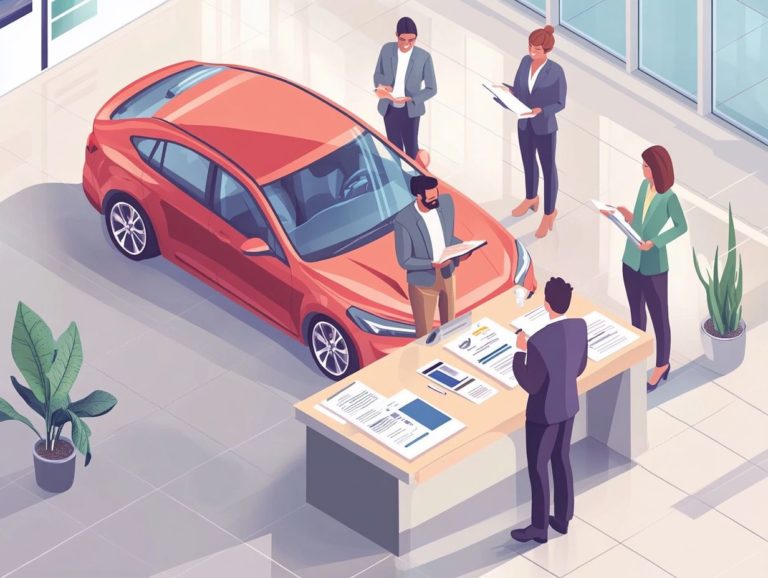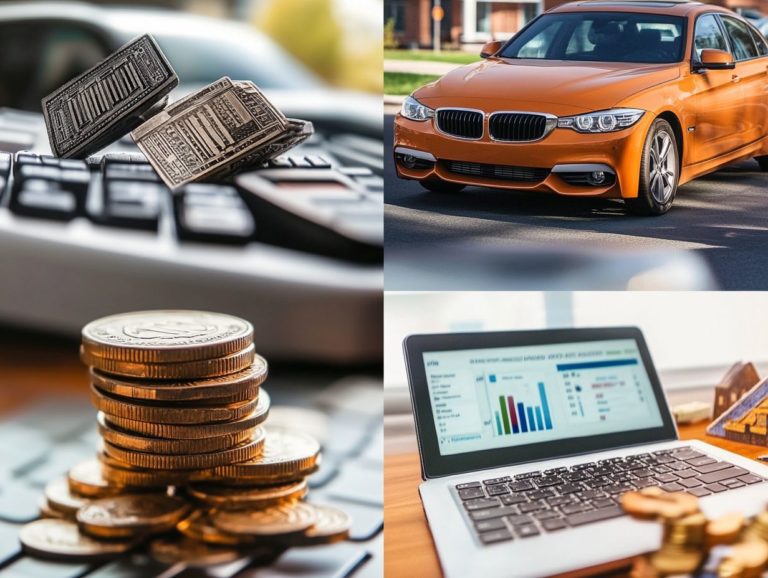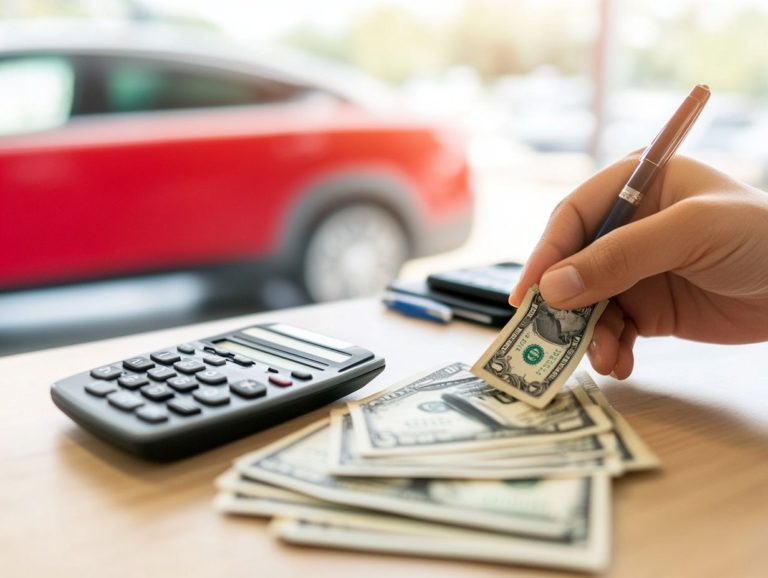The Pros and Cons of Leasing a Vehicle
Leasing a vehicle presents an enticing opportunity for those who wish to enjoy the thrill of driving a newer model without the long-term commitment that comes with ownership.
So, how does it work? This article delves into the fundamentals of vehicle leasing, highlighting advantages such as lower monthly payments and access to the latest models on the market.
Of course, it s essential to consider the drawbacks too, including mileage limits and the absence of ownership.
By the conclusion, you ll find yourself equipped with a clear understanding of whether leasing aligns with your lifestyle or if alternatives like purchasing a car or engaging in car-sharing might better suit your needs.
Contents
Key Takeaways:
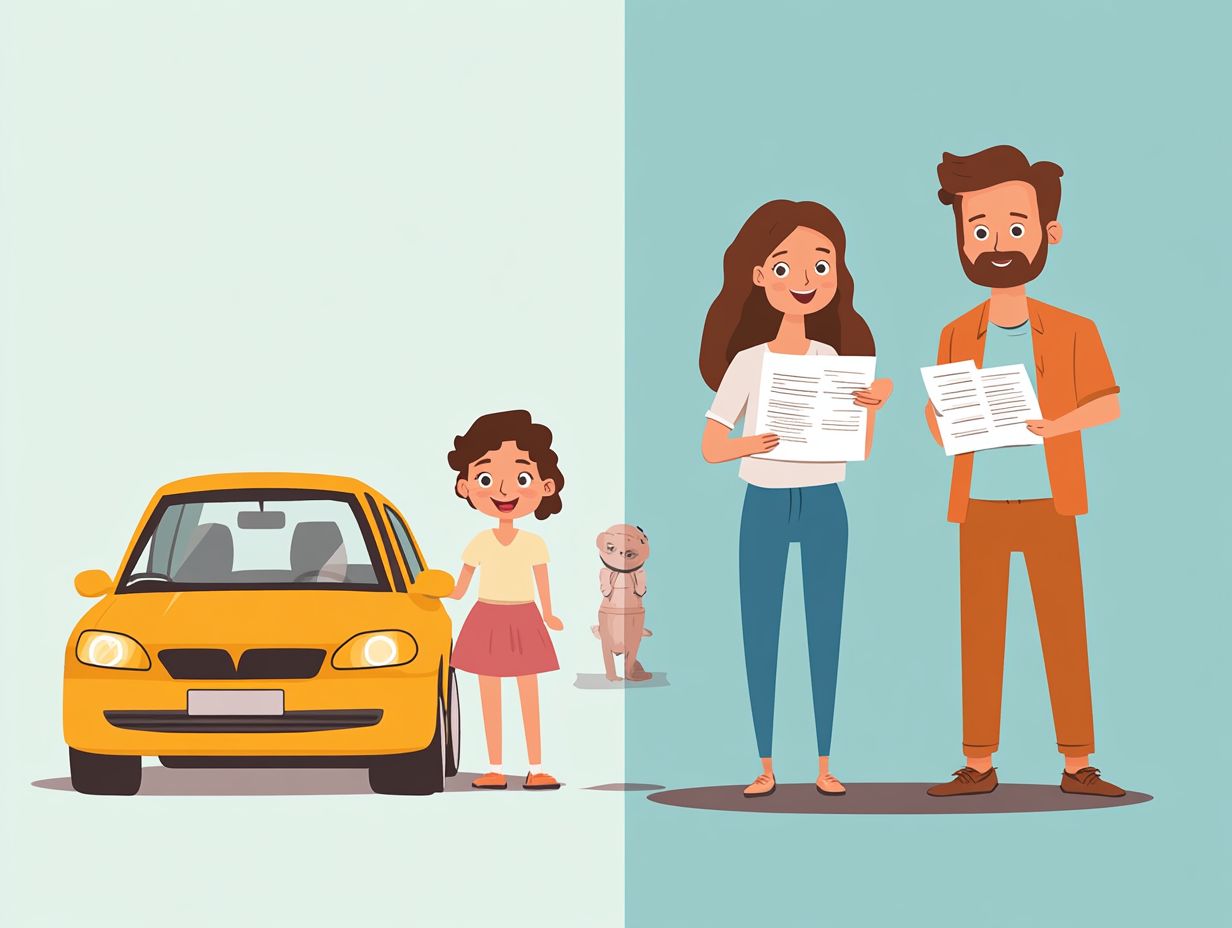
1. Lower monthly payments can make vehicle leasing an attractive option for those on a budget.
2. Leasing allows access to newer vehicles, providing a constant upgrade without the commitment of ownership.
3. Leasing may come with mileage and wear and tear restrictions, and no ownership or equity in the vehicle.
4. To decide if leasing suits you, think about your budget, driving habits, and long-term plans.
5. Buying a vehicle or using car-sharing and ride-hailing services are alternative options to consider instead of leasing.
Understanding Vehicle Leasing
Understanding vehicle leasing means grasping the key elements of financing a car, the costs involved, and what it means to sign a leasing contract.
Leasing presents a different payment structure for acquiring a vehicle, often featuring lower monthly payments than purchasing outright. As a potential lessee, you ll need to weigh various factors, including your financial strategy, any mileage restrictions, and fees for wear and tear.
Making an informed decision now will set you on the path to a more satisfying vehicle experience later.
What is Vehicle Leasing?
Vehicle leasing offers you a simple payment plan that enables you to enjoy the thrill of driving a car for a specified term while making regular payments without the burdensome responsibility of ownership. This enticing option has gained popularity among both individuals and businesses, as it provides a more economical pathway to access a new vehicle every few years.
When you enter into a lease agreement, you’ll typically choose a car from a dealership, negotiate the terms, and commit to a predetermined monthly payment for the lease duration, which usually spans two to four years.
The contract outlines essential details, such as the total mileage allowance typically around 10,000 to 15,000 miles per year and any potential fees for excess wear and tear. Throughout the lease term, you remain responsible for maintaining the vehicle and covering costs like insurance and routine maintenance.
This arrangement gives you a hassle-free driving experience! Enjoy the thrill of a new car with less worry!
Advantages of Leasing a Vehicle
Leasing a vehicle offers a range of benefits that can enhance your driving experience. You ll enjoy lower monthly payments compared to purchasing outright, allowing you to allocate your budget more flexibly.
Leasing also gives you access to the latest models, ensuring you re always behind the wheel of the most up-to-date technology and features.
With a variety of financial options tailored to your specific needs, leasing can be a smart and convenient choice for modern drivers.
Lower Monthly Payments
One of the most enticing aspects of leasing a vehicle is the allure of lower monthly payments, making it a savvy financial choice for many. This affordability stems from the fact that when you lease, you re typically financing only a fraction of the vehicle’s total value.
You essentially pay for the car s depreciation during the lease term instead of its entire cost. Factors such as the car’s estimated worth at the end of the lease and the prevailing interest rates play a significant role in shaping those monthly payments.
Plus, leasing agreements often come bundled with warranties and maintenance packages, which can substantially lessen your overall expenses. So, if you re someone who enjoys the thrill of driving newer models without the long-term financial commitment of outright ownership, leasing presents a compelling option.
Ready to explore your leasing options? Let’s dive in!
Access to Newer Vehicles
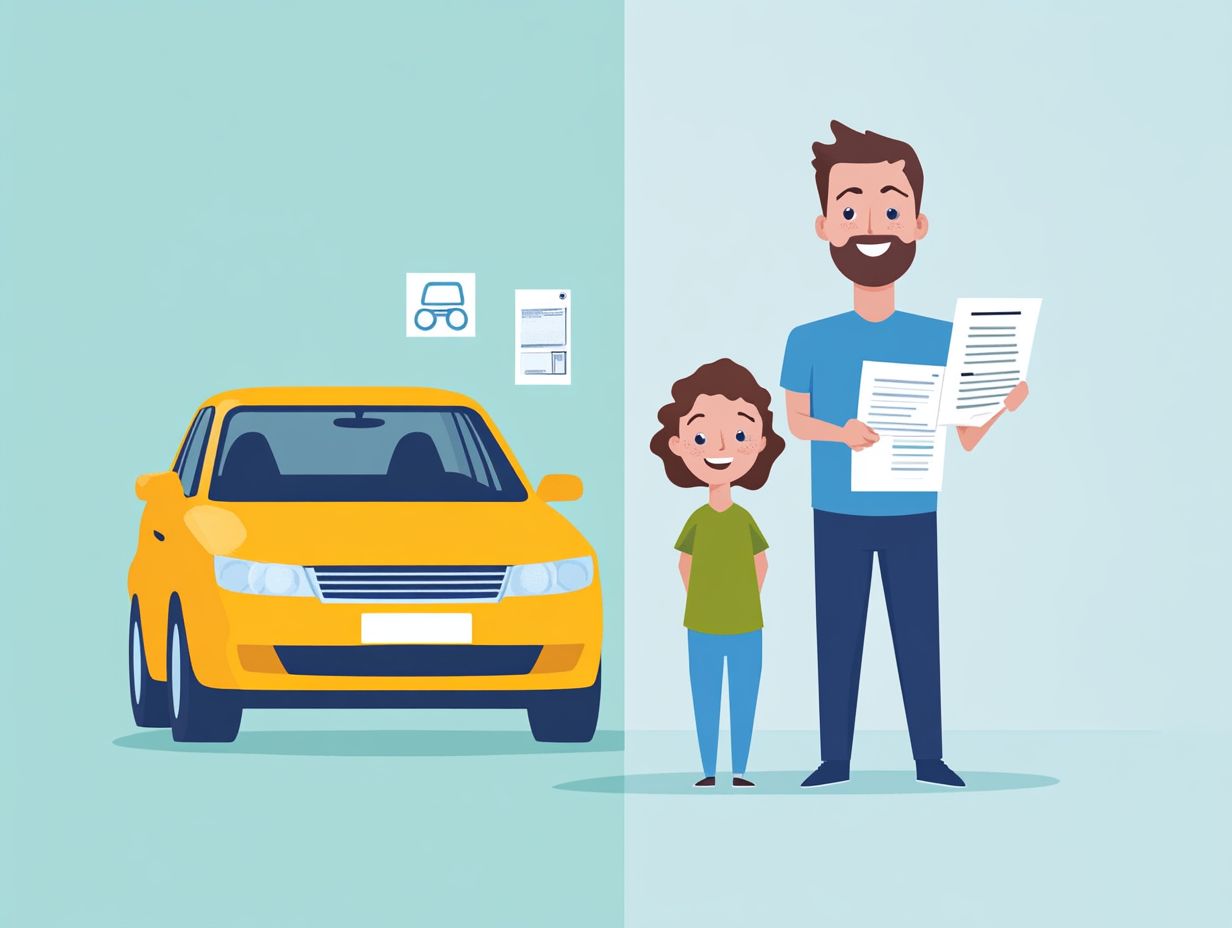
Leasing offers the great benefit of accessing newer vehicles more often. You can enjoy the latest features and technology without committing to long-term ownership.
Leasing lets you enjoy different cars while keeping up with rapid advancements in automotive technology. This includes better fuel efficiency, advanced safety systems, and top-notch infotainment features.
If you love tech, driving a model with the newest innovations is thrilling. Plus, leasing usually has lower monthly payments compared to buying a car.
This flexibility is perfect for modern drivers like you who want performance and cutting-edge technology in one package.
Disadvantages of Leasing a Vehicle
Leasing has perks, but be aware of its downsides. You may face limits on mileage and fees for wear and tear.
Keep in mind that leasing doesn t give you ownership or let you build equity in the vehicle. Think about these points before you decide.
Limited Mileage and Wear and Tear Restrictions
Leasing often comes with mileage limits and strict wear-and-tear rules. Going over these limits can lead to extra fees when you return the car.
Most leases allow for 10,000 to 15,000 miles a year. Going over can cost you 15 to 30 cents for each extra mile.
For those who drive long distances, these fees can add up quickly. Normal wear and tear is fine, but extra damage could mean penalties.
Understanding these terms is crucial to avoid surprises when returning the vehicle.
No Ownership or Equity
A major drawback of leasing is that you don t own the car, which affects your finances. You spend money on lease payments, but this doesn t lead to ownership.
This can feel frustrating, as you might think of lease payments as going into a black hole. You don t build equity, which means the value of the car you own increases over time.
While leasing gives you immediate access to new models, it keeps you in a cycle of endless payments without building ownership.
Evaluating if Leasing is Right for You
To decide if leasing is right for you, think about your finances and how you drive. Consider the unique benefits and downsides of leasing versus owning.
Considerations and Factors to Weigh
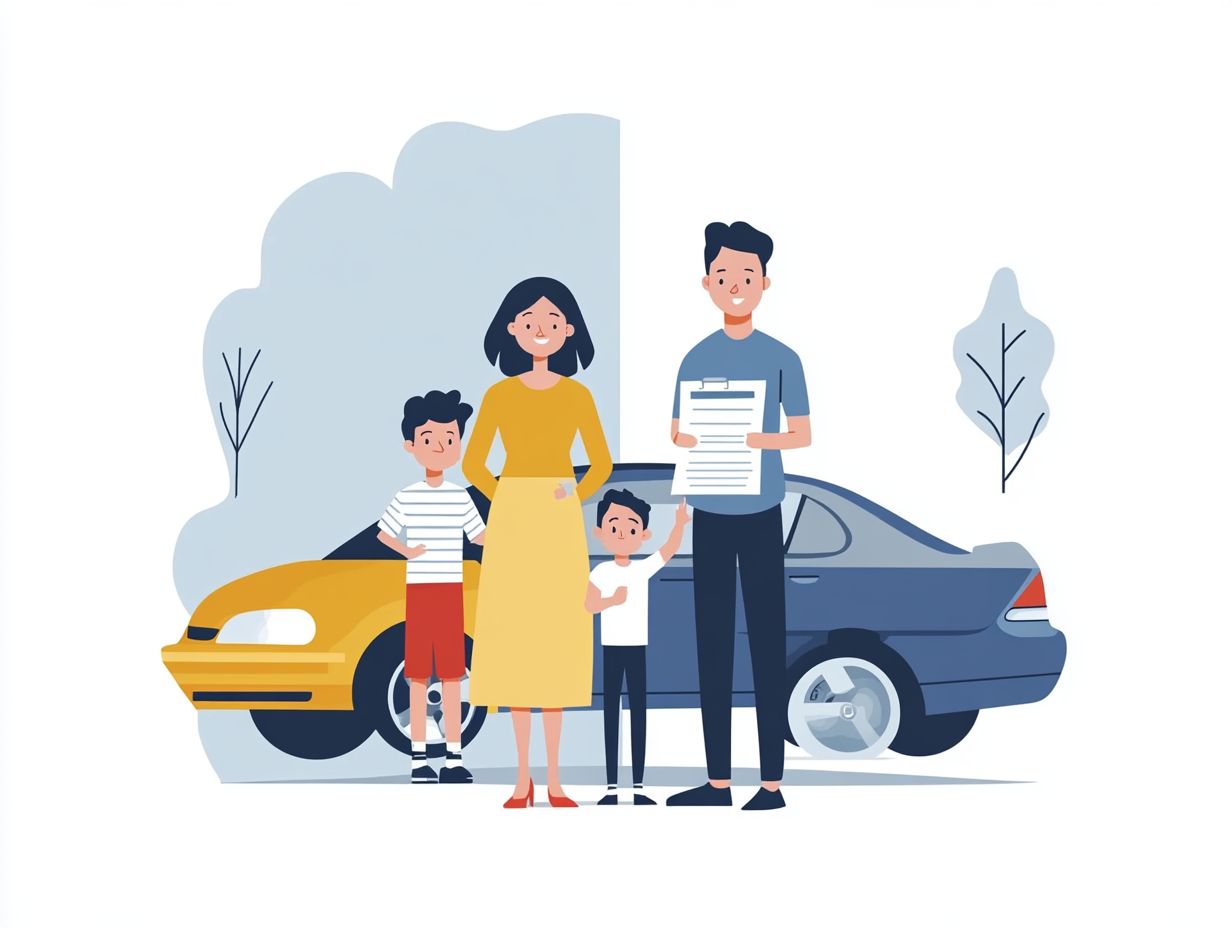
When considering leasing a vehicle, it s vital to evaluate a range of factors, including your driving habits, financial situation, and the advantages of leasing compared to car ownership.
Understanding your personal driving style is key. If you find yourself on the road extensively, those lease mileage limits could feel quite constricting.
Financial stability should be at the forefront of your mind. Assessing your current income alongside any potential future expenses will help you determine if those monthly lease payments fit comfortably within your budget.
Don t forget to consider your lifestyle needs! If you have a variable work schedule or often embark on family adventures, the flexibility that leasing provides may be appealing.
On the other hand, if you re considering the long-term investment of owning a vehicle, that option might be more beneficial for you.
By thoroughly analyzing these elements, you can make a well-informed decision that aligns perfectly with your unique circumstances.
Alternatives to Leasing
Exploring alternatives to leasing opens up a world of vehicle options for you. Whether that’s buying a car outright or tapping into services like car sharing and ride-hailing, these choices cater to a diverse range of transportation needs.
They can enhance your mobility experience significantly!
Understanding Buying a Vehicle
Purchasing a vehicle is a straightforward choice that grants you full ownership and equity. This allows you to make a long-term financial commitment that aligns with your personal budget and driving habits.
This option fosters a sense of freedom to choose your preferred model and features. It also opens up a world of customization that leased vehicles often restrict.
Imagine the delight of bypassing mileage limits and excessive wear-and-tear policies! You can drive freely, without the persistent worry of penalties.
Of course, it s essential to weigh these advantages against potential downsides like depreciation, maintenance expenses, and the responsibility of keeping the vehicle in pristine condition.
Ultimately, grasping both the benefits and drawbacks will help you make a well-informed decision that perfectly suits your lifestyle and financial situation.
Car Sharing or Ride-Hailing Services
Car sharing and ride-hailing services offer modern alternatives to traditional vehicle ownership, allowing you to access vehicles as needed. This can potentially reduce your overall costs.
These innovative solutions harness technology to create seamless experiences tailored to your lifestyle, providing flexibility for urban dwellers and anyone in need of occasional transport!
With car sharing, you can rent vehicles for short durations often by the hour making it ideal for errands or spontaneous day trips. Conversely, ride-hailing platforms connect you with drivers in real time, delivering convenient rides without the burdens of parking or vehicle maintenance.
While these options promote sustainability by encouraging shared car use, be mindful of potential drawbacks. You may find yourself reliant on app-driven systems with varying price structures and the added concern of increased traffic congestion.
Ultimately, these services fit seamlessly into the evolving transportation landscape, catering to diverse needs while challenging the norms of traditional vehicle ownership.
Frequently Asked Questions
-
Are you wondering about the benefits of leasing a vehicle?
-
What are the drawbacks of leasing a vehicle?
-
What is the average lease term for a vehicle?
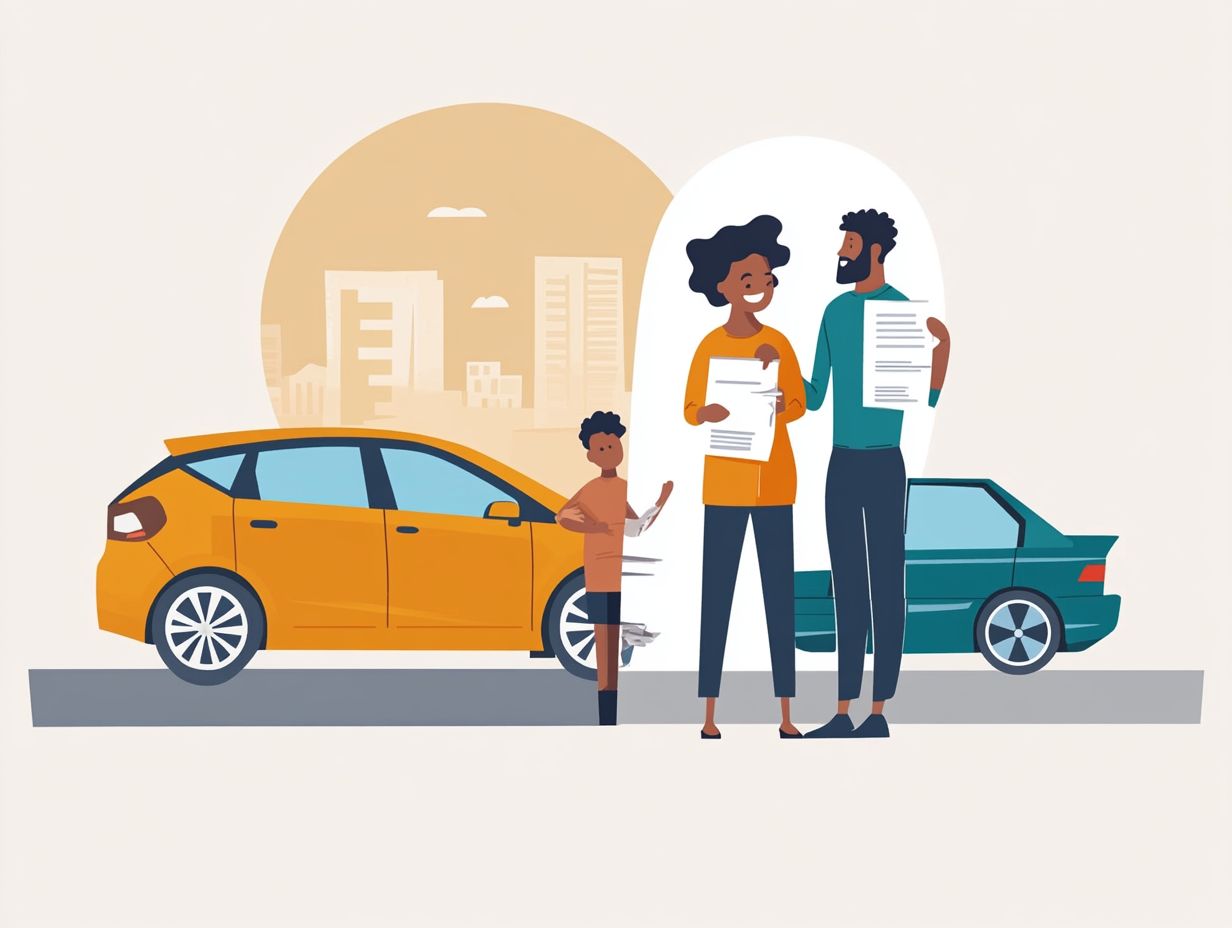
Leasing a vehicle allows you to drive a newer car with lower monthly payments compared to buying. You also don’t have to worry about selling or trading in the car when you want a new one.
Leasing a vehicle typically comes with mileage restrictions and wear-and-tear fees. You also do not own the car at the end of the lease term, which may mean spending more in the long run.
The average lease term for a vehicle is typically 2-3 years. However, some leases may have longer or shorter terms depending on the agreement.
Explore your leasing options today to find the perfect vehicle for you!
Are there any upfront costs when leasing a vehicle?
Yes! Leasing a vehicle usually comes with some upfront costs. This includes a down payment, security deposit, and taxes. But guess what? You can often negotiate these costs to lower your monthly payments.
Can I make modifications to a leased vehicle?
It’s usually best to avoid modifications on a leased vehicle. Remember, any changes can hurt the car’s value and lead to surprise fees later!
What happens at the end of a vehicle lease?
At the end of your lease, act quickly! You can return the car, buy it for a set price, or extend the lease. Some leases even let you trade for a new vehicle!

